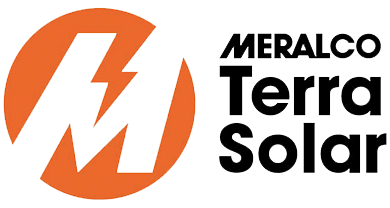How Actis is Helping Build One of the World’s Largest Solar Facilities

Lucy Heintz, Partner and Head of Energy Infrastructure at Actis, recently spoke with Emmanuel “Manny” Rubio, President and Chief Executive Officer at Meralco PowerGen Corporation, about building an 8,650-acre solar farm outside of Manila known as MTerra Solar and the future of the renewables market.
Lucy Heintz: Actis has worked on a lot of first-of-their-kind projects, and we are bringing our experience to bear with MTerra Solar, which is poised to become one of the largest integrated solar and battery storage projects globally. How important is the contribution of MTerra Solar in the context of the Philippines ambitious renewable energy targets – 35% by 2030 and 50% by 2050?
Emmanuel Rubio: These are aggressive targets, but MTerra Solar is playing a crucial role by combining 3.5GWp of solar PV capacity with 4.5GWh of battery energy storage. More than just an energy project, this is a testament that a combination of solar photovoltaic (PV) and battery energy storage can compete with fossil fuels for mid-merit supply.1
Heintz: Southeast Asia is gaining attention as a key market for renewables. What differentiates this moment from previous cycles?
Rubio: Southeast Asia is one of the most populated and fastest growing regions in the world. It’s also one of the most vulnerable to climate change – the Philippines in particular.
Rubio: But what truly drives this shift is the decreasing cost of solar and wind power and improved battery energy storage that enhances reliability. In fact, government policies are now very supportive in the development of renewable energy.
Heintz: Renewable energy projects often push technological boundaries. What makes MTerra Solar’s design innovative?
Rubio: It is equivalent to taking 3 million gasoline-powered cars off the road locally. It supports the Philippines’ goal to reduce 75% of projected emissions by 2030.
Heintz: Renewable energy projects often push technological boundaries. What makes MTerra Solar’s design innovative?
Rubio: MTerra Solar incorporates the latest advancements in solar and battery technologies: bifacial and PV cells with the highest power efficiency ratings to extend daytime solar power generation, ground-mounted galvanized steel structures with fixed tilt to maximize irradiance, and a 4,500 MWh lithium-ion battery storage facility. The storage system will feature multiple battery containers with power conversion systems, offering up to five hours of stored energy.
Heintz: What have been the biggest challenges so far?
Rubio: The biggest challenge has been to build something at such a massive scale. However, this challenge also provides a great opportunity to provide new skill sets to the local workforce as the Philippines transitions to a more renewable future. At its peak, there will be around 20,000 people employed at the sites in the execution phase. Managing our relationships with partners, management, and stakeholders is necessary for us to meaningfully contributing to the local economy.
Heintz: What are the next steps for MTerra Solar with Phase 1 set to start operations in 2026?
Rubio: Phase 1 aims to deliver 600 MW of mid-merit (by installing 2500MWp of solar PV and 3,300MWH of battery) from 8am to 9pm, coming online in the first quarter of 2026. The remaining 250 MW (i.e. an additional 1000MWp of solar PV and 1,200MWh of battery) follows in the first quarter of 2027.
Heintz: How do you anticipate the global energy landscape evolving by 2030?
Rubio: The energy transition will still be the key focus, but the landscape will be more diversified as more technologies emerge. Offshore wind, carbon capture, and ammonia-based energy, for example, are possible future sources of additional supply.
Rubio: For the Philippines, we expect that renewable energy with storage will become the preferred mid-merit supply solution, replacing traditional fossil fuels.
Heintz: Why was Actis the right partner for MTerra Solar in terms of value creation and downside protection?
Rubio: We are tapping Actis’s expertise in project execution and operations – identifying, managing, and mitigating risks. Your experience delivering 36GW of projects globally, especially in emerging markets similar to the Philippines, was highly attractive. In addition, we found Actis shares the common vision with MGEN of being able to optimize the project commercially.
1Mid-merit supply refers to power plants that operate flexibly between baseload (which run continuously) and peak demand (which operate only during demand spikes), adjusting output as needed to ensure grid stability and efficiency.

Sector: Energy Infrastructure
Region: Asia
Year Actis Invested: 2025
